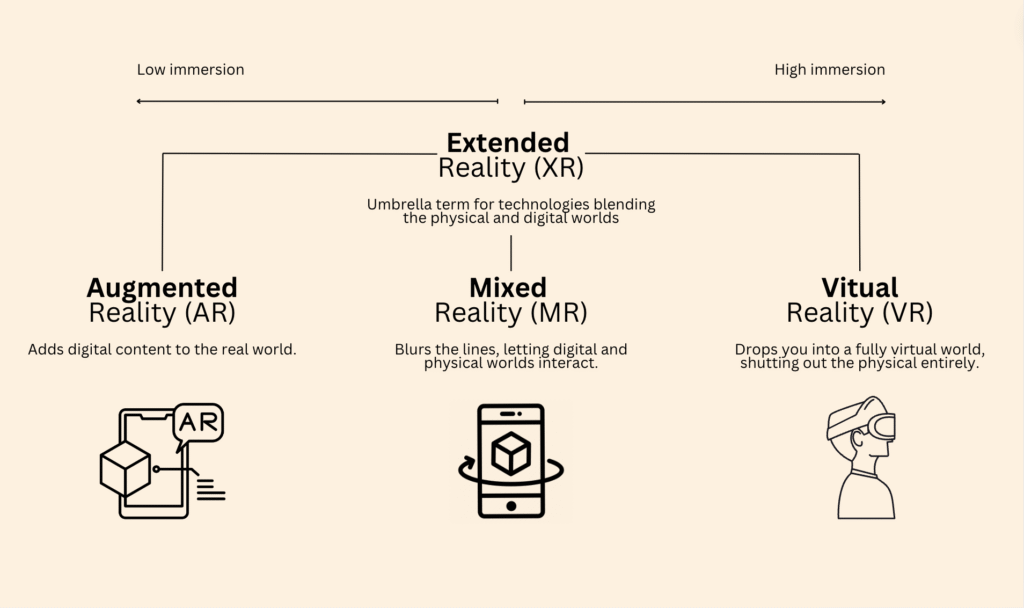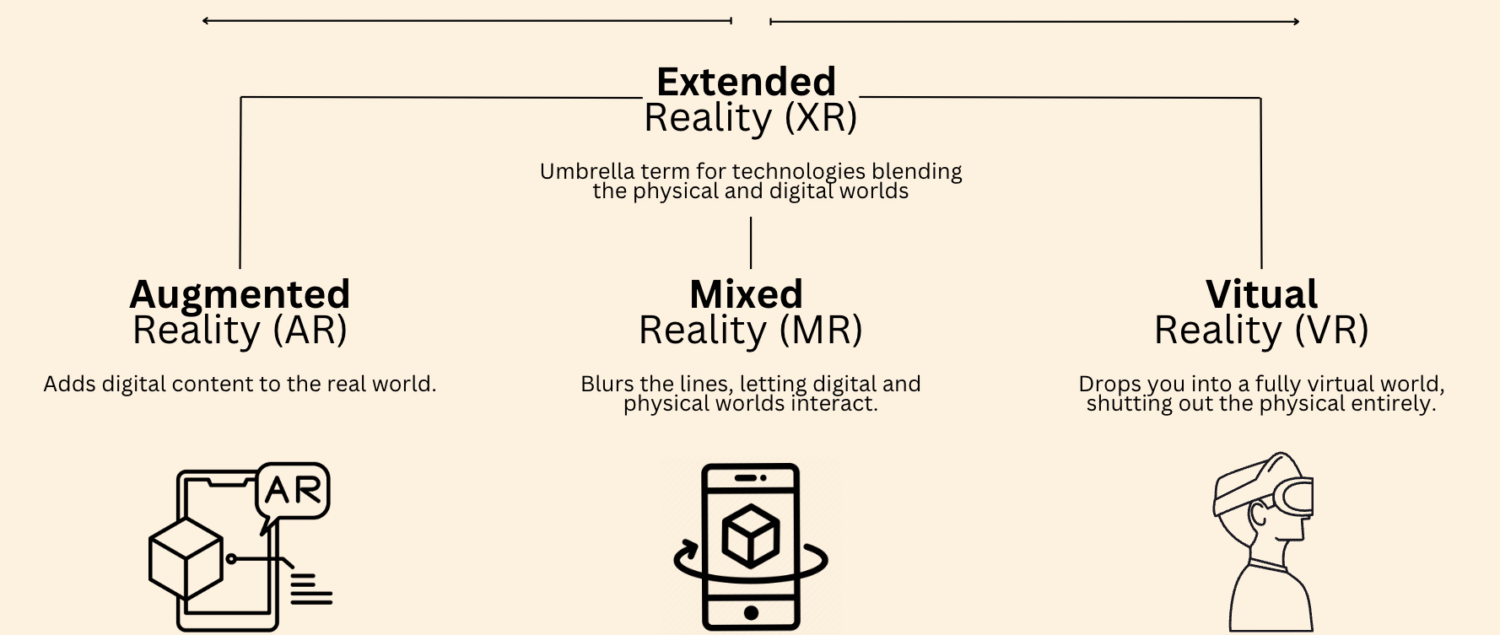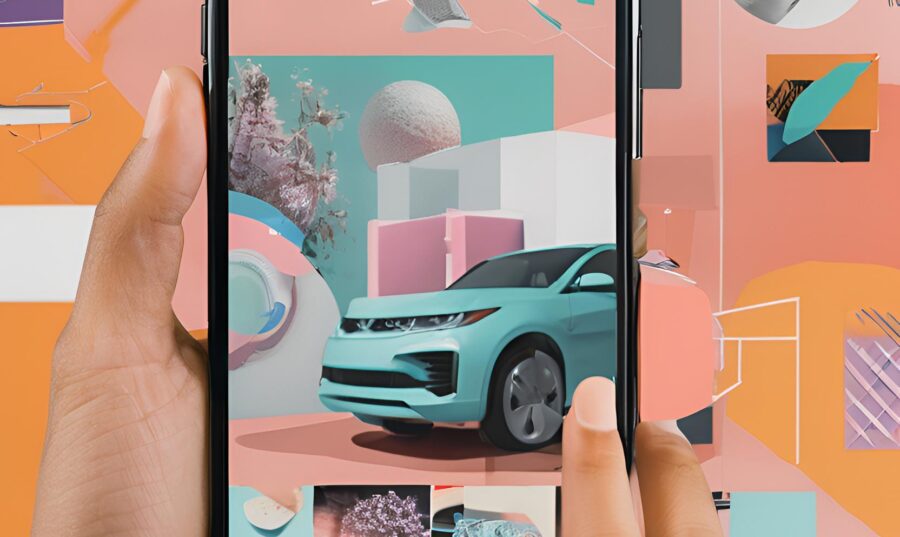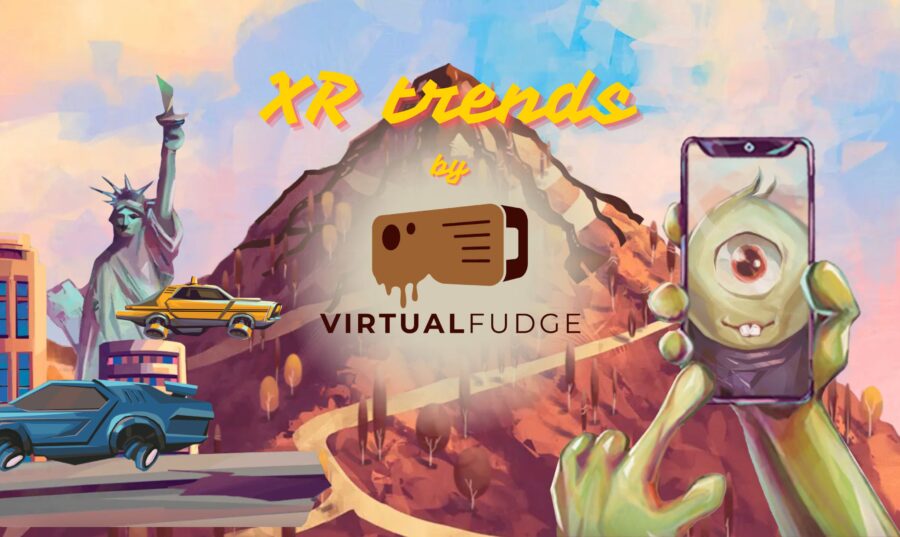What is the difference between AR, MR, VR, XR, and pass-through AR?
Decoding the jargon of our digital future.
Oh, just when we thought technology couldn’t get more complicated! From sci-fi movies to mind-bending episodes of Black Mirror, the once-unimaginable is now becoming our ‘reality’. But, what is reality nowadays? Let’s skip the overall philosophical rabbit hole of the “What is reality” question—Plato and Aristotle have already exhausted that topic. But, with terms like Virtual Reality (VR), Augmented Reality (AR), Mixed Reality (MR), and Extended Reality (XR) popping up everywhere, it’s easy to feel like you’ve stumbled into a tech-fueled fever dream. Let’s break it down and finally get a grip on what these buzzwords are all about.

What is Extended Reality (XR)?
Extended Reality (XR) is like the ultimate tech smoothie—a blend of all the other realities. It’s an umbrella term that covers any technology adding digital elements to our physical world. It includes AR, MR, VR, and even those futuristic innovations yet to be imagined.
What is Augmented Reality (AR)?
Augmented Reality (AR) is like adding sprinkles to your ice cream—it enhances your world without completely changing it. AR overlays augmented information elements onto the real world without actually changing the real world. It enhances user’s experiences. Imagine seeing an arrow appearing on your car window saying to turn left, or a youtube video appearing on a mechanic’s glasses to help guide fixing an issue. Although AR usually doesn’t let you interact much with these digital additions, it’s revolutionizing industries.
What is Mixed Reality (MR)?
Mixed Reality (MR) takes things up a notch by not just overlaying digital elements but allowing them to interact with the real world. It’s like AR on steroids. In MR, the digital and physical worlds play together, like when an Instagram filter changes the features of your face or when you see a virtual character walking on the streets when you hover over with your phone. MR is all about blending these two worlds seamlessly, adapting and reacting to real-world changes. It’s the perfect mix for creating immersive experiences that feel incredibly lifelike.
What is Virtual Reality (VR)?
Virtual Reality (VR) is the granddaddy of immersive experiences. Unlike AR and MR, VR blocks out the physical world entirely, dropping you into a fully virtual environment. Imagine stepping into a different world where everything around you is digital. Whether you’re exploring alien planets, attending a virtual concert, or training for a mission on Mars, VR is all about creating and interacting with a reality that exists purely in the digital realm. It’s the ultimate escape, where the only limits are those of technology—and your imagination.
What is pass-through AR?
Pass-through AR, also known as see-through AR, is a technology that allows users to see the real world through a virtual reality headset by using the cameras facing the front to project the real world onto the virtual reality screen, thereby mimicking AR or MR. You can’t actually see the real world with your eyes directly, but you can see them through the VR screen in front of your eyes. Combining VR and pass-through AR offers a unique and immersive experience. Think of a VR game in which players could see their real-world environment through the headset while interacting with virtual characters and objects. You can explore virtual worlds while remaining aware of your physical surroundings, reducing the risk of motion sickness and enhancing the sense of presence. Why would we use pass-through AR? First, the hardware for mixed reality in 2024 is simply not there yet! Until that day comes, this is a good compromise. Second, it allows anyone who has a VR headset to use it also as an augmented or mixed reality headset. Why stick to one version of XR if you can have them all?
So, to recap:
- Extended Reality (XR): The all-encompassing term for technologies blending the physical and digital worlds, including AR, MR, and VR.
- Augmented Reality (AR): Adds digital content to the real world like a sticker without changing or interacting with it.
- Mixed Reality (MR): Blurs the lines, letting digital and physical worlds interact.
- Virtual Reality (VR): Drops you into a fully virtual world, shutting out the physical entirely.
- Pass-through AR: Allowing users to see the real world through a VR headset, while also interacting with virtual objects placed in the real-world environment.
Whether you’re exploring new worlds, enhancing your day-to-day with digital overlays, or just trying to keep up with the latest tech trends, understanding these realities is your first step into the future of “reality”. Even Plato and Aristotle would be scratching their heads at today’s additional realities. The question isn’t just ‘What is this reality?’ but ‘What will be the next reality?’ Join the exploration, philosophers!



